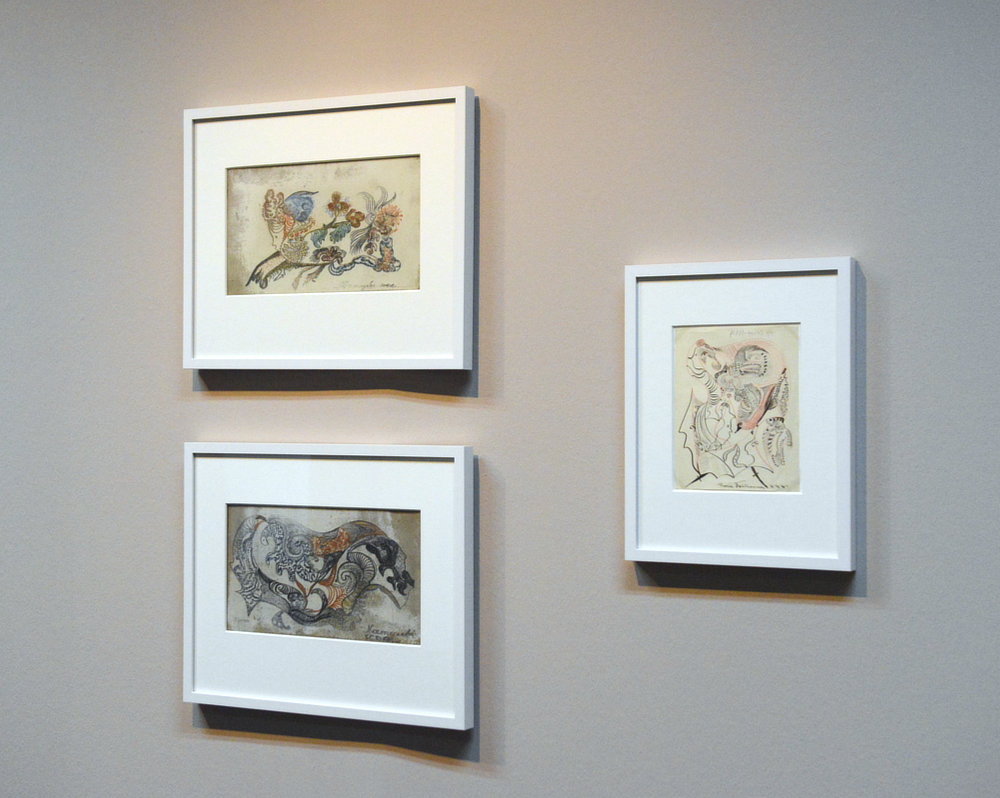KÄTHE FISCHER
b. 1870, Germany
d. ?
WORKS | BIOGRAPHY | EXHIBITIONS | PUBLICATIONS
SELECTED WORKS
BIOGRAPHY
In 1913 Käthe Fischer accidentally discovered her mediumistic abilities during a table-turning séance with her mother in Munich. Soon she began to write automatically under the spiritual guidance of her late grandfather. She eventually burned these "revelations" of religious content at the command of her spirit guide. Then, she developed the ability to draw automatically. By order of the "spirits", Käthe Fischer made ornamental watercolors, but always one over the other until a chaotic clutter remained. From then on she only worked with ink and colored pencils as well as pastel chalks.
One of her spirit guides was a Nubian who signed a series of automatic drawings with the name Namgubi. These drawings with plant motifs, arabesques and ornaments with interwoven physiognomies show a rhythmic baroque as well as playful style. Käthe Fischer signed some of her works with the name Maria Kahlhammer, a spiritualistic medium active and well known in Munich in the middle of the 19th century, who was supposed to act as her spirit guide. These drawings consist of energetically sketched grotesque forms, which sometimes look like humorous miniatures. Outlines of faces grow out of lines, which often have an ambiguous meaning, individual words are being woven into the drawing.
EXHIBITIONS
2019 Plants of the Soul: Floral Fantasies between Symbolism and Outsider Art. Wilhelm Hack Museum, Ludwigshafen, Germany, 31/03 – 04/08/2019
2019 Alma: Mediums and Visionaries. Es Baluard Museum, Palma de Mallorca, Spain, 2/15/2019 – 6/2/2019

Works by Käthe Fischer from CoMA at the exhibition Plants of the Soul: Floral Fantasies between Symbolism and Outsider Art. Wilhelm Hack Museum, Ludwigshafen, Germany, 31/03 – 04/08/2019
Photo © Elmar R. Gruber
PUBLICATIONS
Peter, Josef, "Ein Malmedium." Psychische Studien, 51, 1924, pp. 581-87.
Peter, Josef, "Malmedien. (Eine Ergänzung zu dem Artikel ,Ein Malmedium', Psych. Studien, Oktober 1924)." Psychische Studien, 52, 1925 pp., 89-93.





